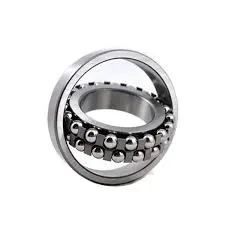
Nov . 18, 2024 05:26 Back to list
Thrust Ball Bearing Specifications and Measurement Guidelines for Optimal Performance
Understanding Thrust Ball Bearing Dimensions
Thrust ball bearings are crucial components in various mechanical systems, designed to accommodate axial loads while allowing for minimal rotational movement. Their unique structure enables them to handle high pressure in one direction, making them indispensable in applications where axial load is predominant. To appreciate their functionality and selection, understanding the dimensions of thrust ball bearings is essential.
Key Dimensions and Specifications
The dimensions of thrust ball bearings are typically governed by standards set forth by organizations like ISO (International Organization for Standardization) and ANSI (American National Standards Institute). The most critical dimensions include the outer diameter, inner diameter, and thickness of the bearing.
1. Outer Diameter (D) This dimension reflects the diameter of the bearing's outer race. It is crucial as it determines the space required for mounting and influences the bearing's load-carrying capacity.
2. Inner Diameter (d) The inner diameter is the hole through which the shaft passes. It's vital to ensure that the inner diameter aligns with the shaft's diameter to minimize play and ensure stability during operation.
3. Thickness (H) The thickness of the bearing impacts its overall strength and load capacity. Thicker bearings can generally handle higher loads, but they also require more space.
4. Ball Diameter This refers to the diameter of the balls within the bearing. The size of the balls influences the bearing's load capacity and the nature of its operational performance.
thrust ball bearing dimensions

5. Width Often associated with the thickness, the width can have implications on the bearing's overall performance, especially in high-load situations.
Importance of Tolerances
When dealing with thrust ball bearings, tolerances for each dimension are critical. Tolerances determine how tightly fitted the bearing will be on the shaft and how well it seats in its housing. Poor tolerances can lead to misalignment and premature failure of the bearing, making it vital for engineers and manufacturers to adhere to specified limits.
Application Considerations
In terms of applications, thrust ball bearings are common in automotive, aerospace, and industrial machinery. They are particularly suited for situations where axial loads are predominant, such as in gear systems, clutches, and table saws. When selecting a thrust ball bearing, engineers must consider its dimensions in relation to the specific requirements of the application, including load capacity, speed, and environmental conditions.
Conclusion
In conclusion, the dimensions of thrust ball bearings play a fundamental role in their performance and application. Understanding the significance of outer and inner diameters, thickness, and tolerances enables engineers to make informed choices that enhance the efficiency and longevity of mechanical systems. As technology advances and applications become more demanding, the precision in bearing dimensions becomes even more critical, ensuring that thrust ball bearings continue to meet the evolving needs of modern design and engineering. Proper selection based on these dimensions not only improves performance but also reduces maintenance costs and enhances the reliability of machinery across various industries.
Latest news
-
Premium Deep Groove Ball Bearings | High Speed & Reliability
NewsAug.29,2025
-
Durable Scaffolding Clamps - Secure & Reliable Tube Connectors
NewsAug.28,2025
-
Common Failures in Thrust Ball Bearings and Solutions
NewsAug.22,2025
-
How Tapered Roller Bearings Can Take Shock Loads
NewsAug.22,2025
-
Angular Bearings in High-Precision Spindles
NewsAug.22,2025
-
The Impact of Misalignment on Cylindrical Roller Bearing Performance
NewsAug.22,2025
